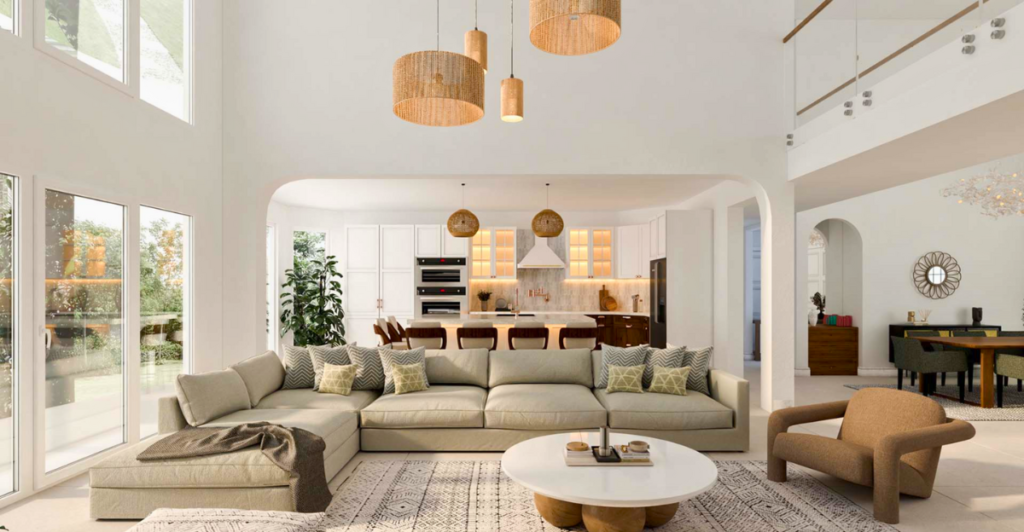
Your living room is not just a room—it’s the emotional center of your home. Whether you entertain, relax, or recharge in this space, good interior design sets the tone for your entire house.
However, impeccable design is more than aesthetics; it expresses personality, creates connections, and even influences mental health. For example, a 2020 study published in Environment and Behavior states that a well-designed home can actually lower cortisol levels, reduce stress, and improve mood.
Here, we will discuss 10 transformative living room ideas that combine timeless principles, modern luxury, and unexpected twists to challenge outdated norms and inspire your next redesign or renovation.
Benefits of a Beautiful Living Room

Coming home to, entertaining in, and relaxing in a beautiful, well-designed living room has a host of benefits. For one, it fosters emotional well-being, boosts productivity, and facilitates social interaction, helping you create an atmosphere conducive to the room’s purpose at any given time.
A beautiful living room is more likely to reflect personal values and creativity. Studies show that aesthetically pleasing environments reduce stress and increase satisfaction. Effective design is not superficial; it is environmental psychology in action.
1. Break the Grid: Float Your Furniture
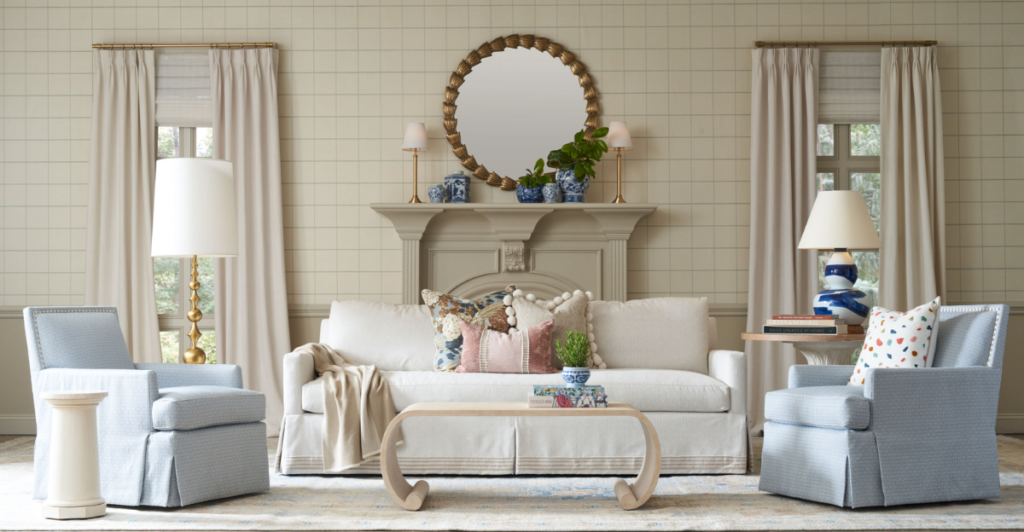
When walking into the living room, we often see furniture pushed up against the wall in an effort to make the space look larger. However, this actually does the opposite, so consider floating furniture instead by moving pieces away from the wall.
This can foster conversation, improve traffic flow, and define purpose within open-plan spaces. For example, anchor your seating around a statement rug or fireplace instead of pushing it to the edges of the room. This spatial shift encourages social interaction and gives people space to move around more naturally.
2. The Power of Symmetry (and When to Break It)
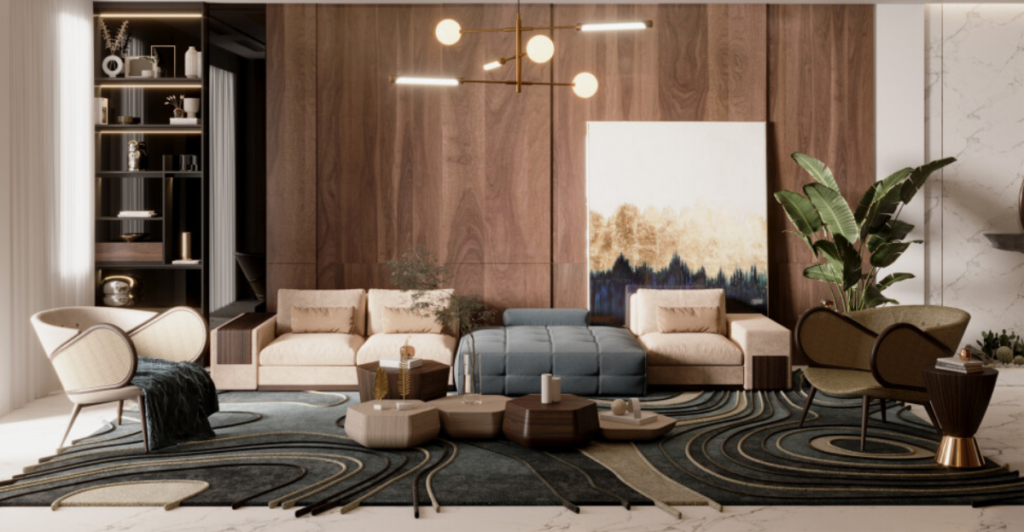
Symmetry is an age-old design principle seen in Roman villas and Versailles. Balanced rooms calm the eye, create order, and enhance aesthetic harmony. However, be careful not to make things look too symmetrical, as this can then feel overly formal or sterile.
For example, use a symmetrical base, such as matching side tables or twin chairs, and then break it up with bold art or an asymmetrical lamp. This helps to create visual tension, which, according to psychological studies, increases mental engagement by up to 27%.
3. Layer Textures Like a Stylist
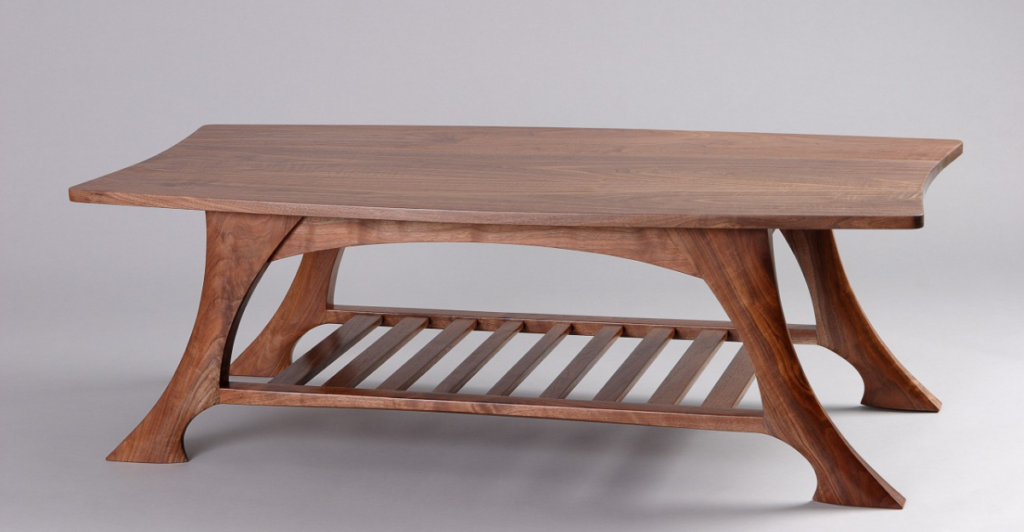
Texture is the unsung hero of sophisticated interiors. When used together, a leather chair, velvet pillow, woven rug, and metallic accent produce tactile contrast and visual depth. Layered texture elevates even a neutral palette, turning bland into bold. For example, you can use up to three differing textures, such as combining industrial concrete with organic linens, in a room to help engage the senses.
4. Invest in a Statement Piece

An eye-catching, centering statement piece is a requirement for every living room. It can be a sculptural coffee table, large art, or a designer light fixture, but the item will serve to ground your overall design and provide a conversation starter.
Elle Decor reports that 67% of interior designers list a focal point as “critical” to tying a room’s aesthetic together. For example, you could splurge on an expensive rug to help elevate a cheap sofa, applying the well-known Pareto Principle of design (80/20 rule) that ensures that 20% of your decisions yield 80% of the impact.
5. Celebrate Contradiction: Mix High & Low
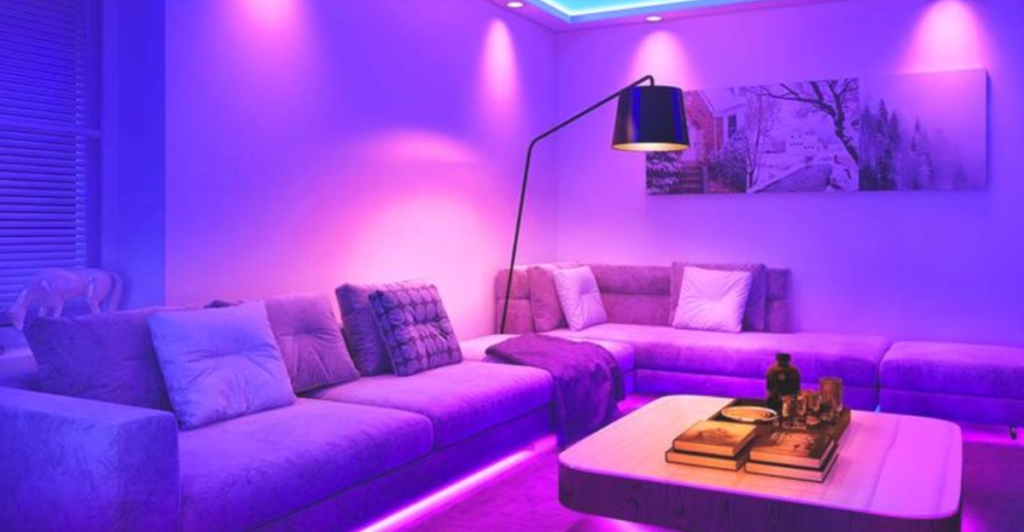
Historically, interior design has advocated for “matchy-matchy” styles that are often overwhelming and lack real creativity and personality. Now, designers are moving toward a more curated, not coordinated, design style.
For example, you can mix high-end art with IKEA basics or vintage items with new technology. This creates personality and avoids the sterile feel of a showroom. Personality is a paradox, so let your living room bear witness to this.
6. Light: The Invisible Designer
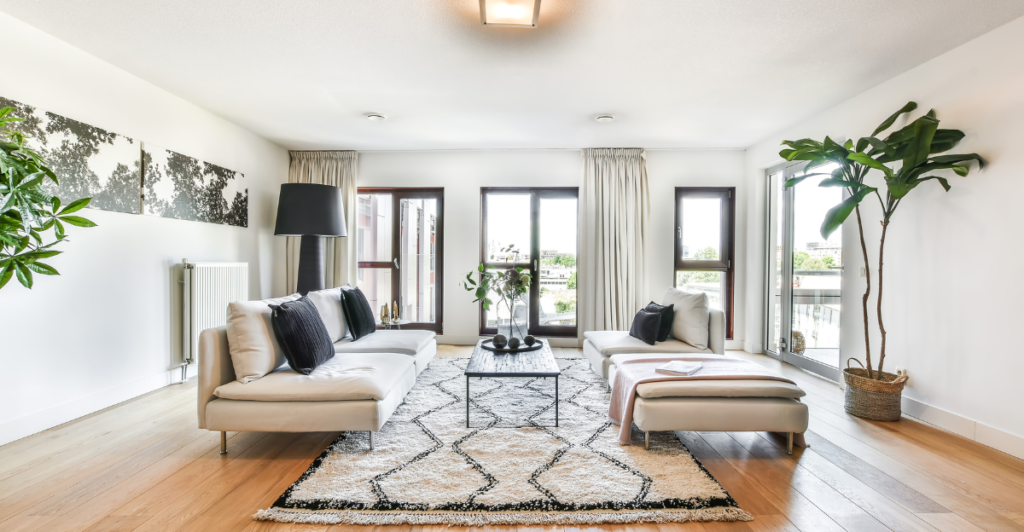
Your lighting design dictates a room’s atmosphere more than anything else. For example, natural light is known to boost serotonin levels in the brain, helping to regulate your mood. Therefore, consider layering your light by combining ambient, task, and accent lighting to control the narrative. Further, bad lighting can make a room feel 30% smaller, making thoughtful lighting crucial in smaller spaces. Play with backlit mirrors, under-sofa LEDs, or dimmable sconces to create your desired ambiance.
7. Curate, Don’t Decorate

As designers move from coordinated design styles, you can shift your mindset from decorating to curating. Your living room, as with a gallery, should tell your story. For example, show personal items, the books that you love most, or artwork that you have gathered over the years.
This adds depth and authenticity. According to a Harvard Business Review report, spaces that tell a story increase emotional connection by 42%. Adding personal items doesn’t necessarily mean a maximalist style, either. Minimalism isn’t about the absence of “stuff” but rather a more considered design style.
8. Reimagine the TV
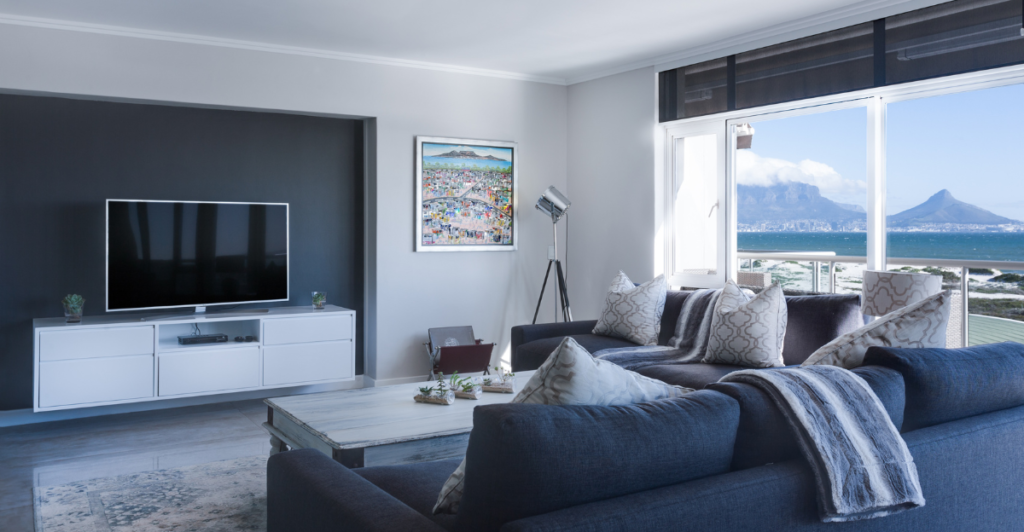
Despite our love for technology and watching TV, it doesn’t need to be the centerpiece of your living room. Instead, mount TVs in framed cabinetry, behind sliding panels, or consider investing in interior design-friendly TVs, such as Samsung’s The Frame, which turns screens into art when turned off. This trick can be used to minimize tech clutter. An impeccably integrated TV makes your living room both cinematic and serene.
9. Borrow from Hospitality Design
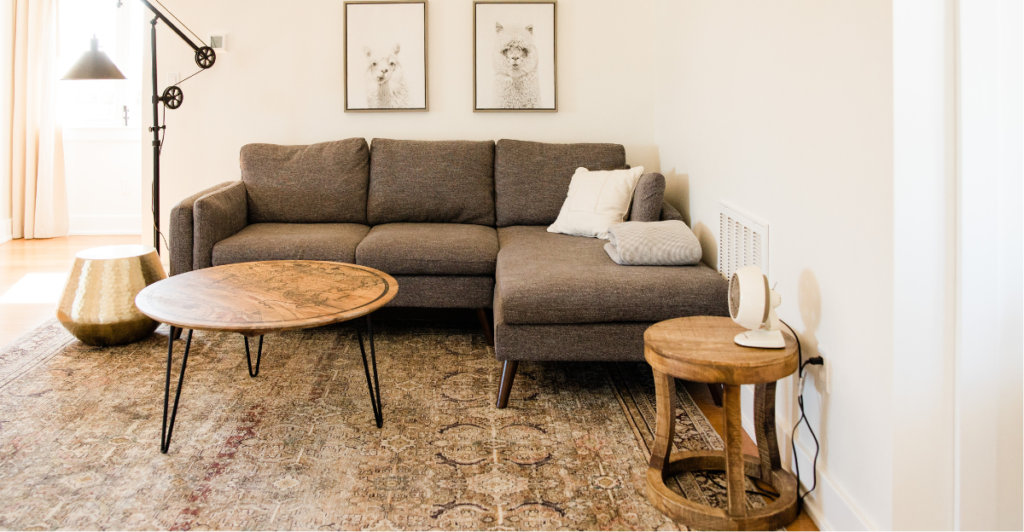
Any good interior designer will tell you that restaurant bathrooms and hotel rooms are great sources of inspiration, as designers must be clever in their designs to accommodate small spaces. By observing how restaurants and hotels decorate spaces, you could find many ways to improve the atmosphere and design of your living room. For example, use layered lighting, signature scents, and cozy throws. Hotels are often designed for the five senses, something you can easily apply to your living room design.
10. Think Vertically
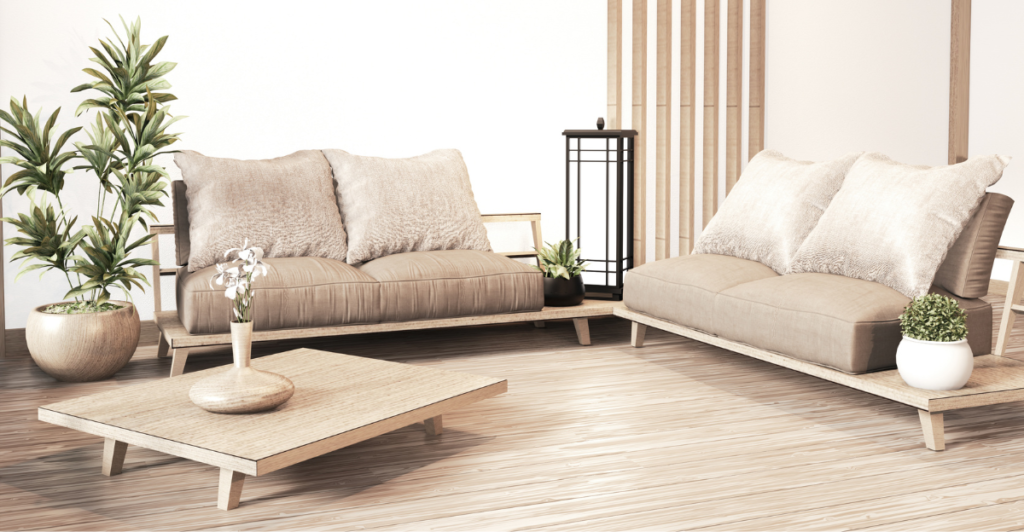
As our homes get smaller, it is important to remember not to waste wall space. Vertical artwork, suspended plants, and tall bookshelves draw the eye upwards and provide the illusion of higher, more dramatic spaces. Further, consider installing ceiling-to-floor curtains to optimize the perception of available space perception. The sky isn’t the limit—it’s your canvas.
Creating an Impeccable Living Space
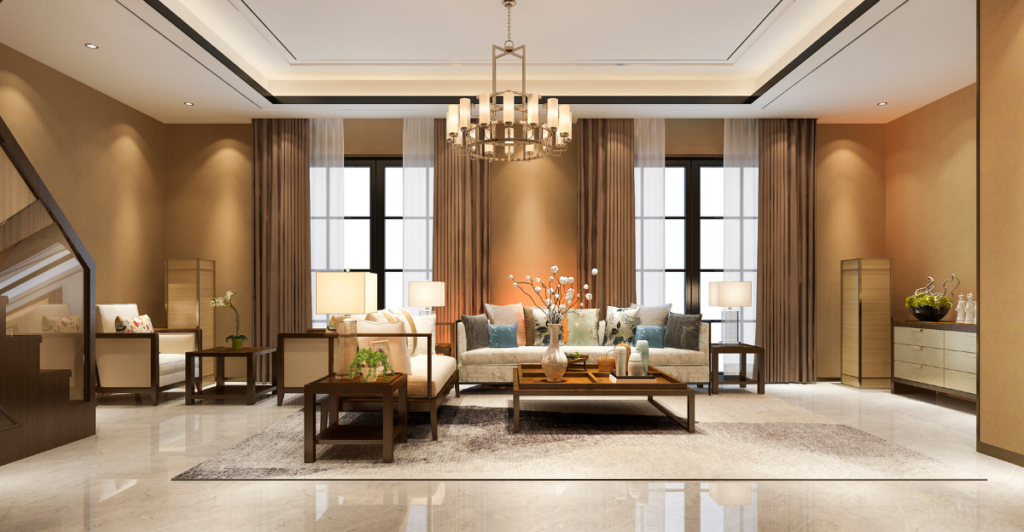
Great living room design is as much about personality, creativity, and atmosphere as it is about trends. It is more about transformation than trends. By rejecting traditional interior design models, embracing contradictions, and fostering creativity, you can ensure that your living room is both beautiful and best suited to your lifestyle. The above ideas don’t offer you rules to follow but a roadmap to guide you in your redesign or renovation, with the sole requirement being that you create a space that you love.
